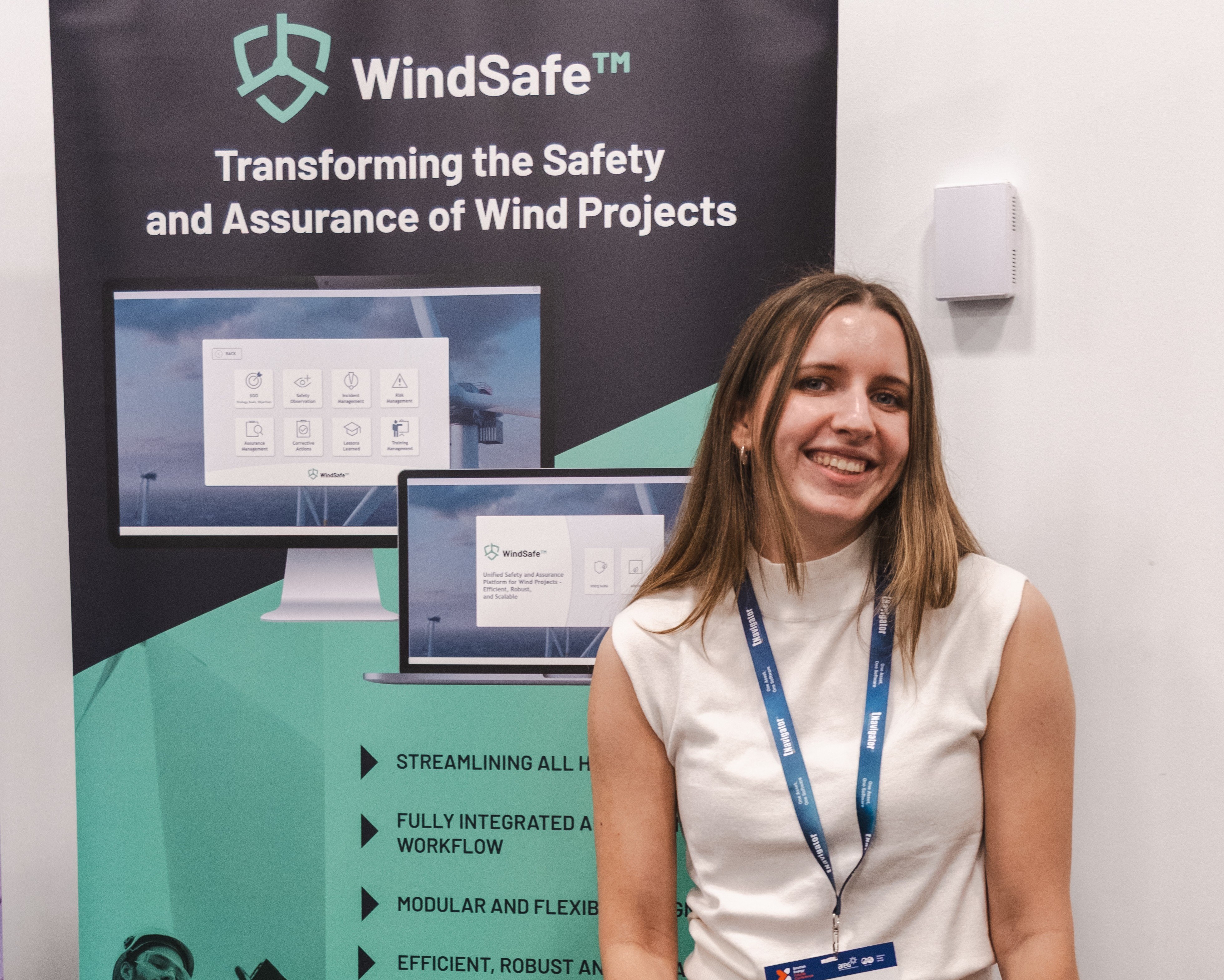
In the offshore wind industry, safety and compliance are more than just checkboxes - they’re daily challenges shaped by complex operations, multiple contractors and data spread across disconnected systems. In a sector that’s growing at a rapid pace, project owners and contractors face increasing pressure to maintain impeccable safety standards while streamlining operations.
That’s where WindSafe™ comes in - Fennex’s unified HSEQ platform. Purpose-built for offshore wind, it brings safety, compliance and operational data together in one intelligent, easy-to-use solution.
Aspen Kissinger, Product Growth Lead at Fennex, has played a pivotal role in WindSafe™'s evolution. When she joined the team, it was just a single module - a safety observation tool. Aspen helped onboard the first users, a key turning point that set the stage for WindSafe™ to grow into the comprehensive eight-module HSEQ platform it is today.
Here, Aspen shares the story behind the platform’s development, what sets it apart and how it’s already changing the way offshore wind operators manage safety.
What sparked the idea to create WindSafe™?
“Our founders saw the opportunity to bring our offshore operational expertise from oil and gas into the renewables space. It’s clear that Scotland, with its expansive coastline and decades of offshore expertise, was primed to become a global hub for offshore wind, and as a company founded in Aberdeen, we were perfectly positioned to be part of that journey.
“We didn’t want to just repackage existing tech but instead, ensure we were developing a solution that addressed real pain points in offshore wind. We hosted a workshop and invited major players like Shell, Nadara and Peterson to share their biggest challenges. That feedback shaped the first version of WindSafe™.
“A grant from the Offshore Wind Growth Partnership (OWGP) also played a key role, allowing us to invest in developing the platform before we had customers. That gave us the freedom to focus on getting it right from the outset.”
What are the biggest safety and compliance hurdles in offshore wind today?
“Many organisations are juggling multiple systems for compliance, risk, safety and operational data - and these systems don’t talk to each other. That means data is siloed, inefficient to manage and time-consuming to act on.
“On top of that, even though the primary contractors hold the responsibility to ensure their projects are running safely, their subcontractors may be using different systems which makes it difficult to get full visibility of a project’s overall safety.”
How is WindSafe™ helping to overcome those challenges?
“WindSafe™ is a one-stop shop where all compliance, risk and assurance data lives in one place and the modules are all connected. If a safety observation requires further action, it flows automatically into the Action Management module. Similarly, if a self-audit flags ‘poor’ or non-compliant, it lands in the same action list. Essentially, it gives users a comprehensive to-do-list of all the interventions they need to make to keep their operation safe and compliant.
“We’ve also made it accessible for subcontractors working under a primary contractor without charging per user. Unlike other SaaS modules, we believe safety should be inclusive and companies shouldn’t have to pay for more people to contribute to their safety culture. With controlled access levels, subcontractors can submit observations or complete assigned tasks without seeing sensitive company data. It keeps things simple while protecting critical company information.”
What’s one standout feature or function you’re especially proud of?
“The Safety Observation module is probably my favourite. It’s built on our flagship BBSS solution but modified to the unique needs of the offshore wind industry. We added geotagging so offshore workers can submit data just by being near a specific location - no QR code needed.
"We also replaced the generic hazard categories with the Life-Saving Rules (LSRs) from G+, the offshore wind safety industry body. This ensures that safety observations are categorised by LSRs, keeping key safety priorities top-of-mind for workers. It simplifies the reporting process for managers, as the data is automatically formatted to meet G+'s requirements, saving time and effort in compliance."
“Furthermore, this module is powered by AI at its core, removing the inefficiencies common in traditional safety observation software and giving valuable time back to frontline teams—so they can stay focused on the ground, keeping their people safe.”
“Not to mention, our case study with Noble showed that the help of this AI in our solutions reduces incidents by 43%. That’s time and money saved but most importantly, people going home safe.”
What’s been the most rewarding part of bringing WindSafe™ to life?
“It’s seeing the reactions of potential customers when we show them the solution. Their eyes light up because it speaks directly to the challenges they face. Recently, a company told us they’d been using six or seven different systems during construction. After our demo, they said: ‘This would’ve been perfect two years ago’ and immediately connected us with their operations lead. It’s moments like that which prove we’re solving real problems.”
What’s next for WindSafe™?
“We’re developing new modules including Management of Change, Training and Competency and Document Management. The long-term vision is to be a unified safety, assurance and operations platform.
“We have much more expertise than just safety and assurance - we’ve built solutions for complex offshore operations before, like rig move planning and acceptance, and we know they can be adapted for wind. The fewer systems you need, the better, so if we can cover more ground with the same platform, I think that will be hugely valuable for wind project owners.”
Curious about how WindSafe™ could transform your HSEQ operations? Click here to learn more or book a demo.








